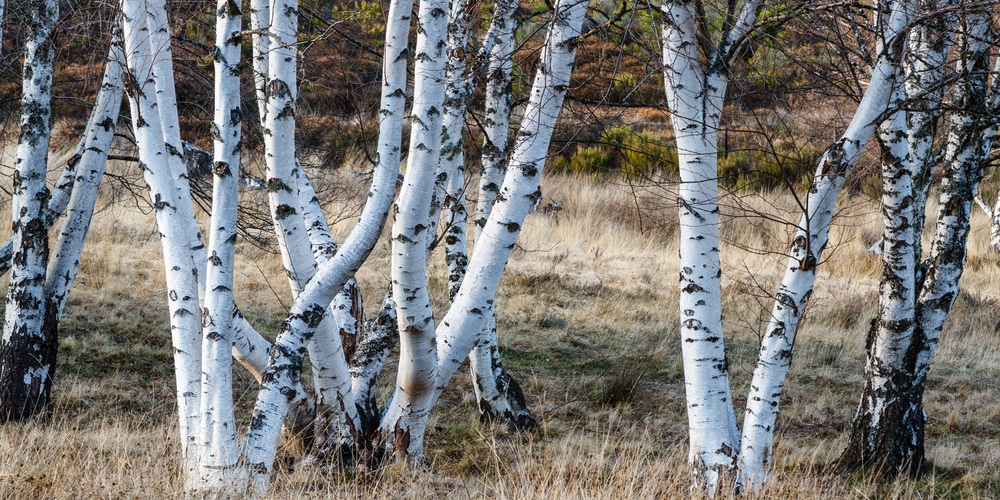Birch trees in winter are some of the most stunning statement pieces you can find during the cold season. Let’s take a closer look at the tree’s dormancy, cold tolerance, and growing habits when the first frost hits.
How Do Birch Trees Survive Winter?
Birch trees are among the elite few that can thrive in the cold. The iconic tree is characterized by its white bark, which plays a role in keeping itself alive in the face of rapid temperature fluctuations.
We know that a paper bark’s surface peels away easily, but did you know that the material is a chemical powder that’s mostly made up of betulin? The outer bark layers are colored white because of betulin, which has a reflective quality that comes in handy during winter.
The light-colored bark deals well with extreme temperature fluctuations caused by the heat of the sun during the day and the freezing drops come night time. It doesn’t absorb the heat and radiation but rather reflects them out and away from the trunk.
This defense mechanism allows the birch tree to take the cold and survive winters up to minus 128 degrees F (or roughly minus 89 degrees C).
Do Birch Trees Lose Their Leaves During Winter?
Birch trees are known to lose their leaves in winter.
Birch, along with dogwood, oak, maple, and willow are classified as deciduous varieties, which means they are likely to shed their respective foliage in preparation for the winter season.
Deciduous trees tend to lose their leaves during the fall season and early winter as a way to cope with the incoming cold. They will try to store up as much water as possible to survive long periods of drought, hence the leaf dropping.
Birch trees losing their leaves in winter is not something you should be alarmed with. As long as there are signs of life and the branches are not turning brown or dying, you can expect them to come back at the first sign of spring.
When temperatures warm up, birch trees typically grow new leaves to catch light and nutrients from the environment.
How Hardy is Birch Trees?
Birch trees may be short-lived compared to other tree species but they more than make up for it with year-long landscape interest.
In spring, birch trees put out green leaflets and produce lively foliage throughout the growing season. When fall comes the leaves change to burgundy, orange, and yellow and make for a spectacular sight.
Hardiness levels may vary depending on the birch species, but almost all of them can survive the winter cold. The Paper or White Birch can grow in zones 2 through 6 and reach up to a stately 70 feet, while others such as the River Birch can thrive in zones 4 through 9 and achieve a height of 50 feet.
The best way to ensure that your birch tree grows well is to provide the right environment for them. Birch trees prefer dappled sunlight and cool, moist soil, or partial shade where they can get morning sunlight and shade in the afternoon.
As for the soil, birch trees don’t mind the type as long as it’s well-draining and contains enough nutrients to support growth.
Do Birch Trees Go Dormant?
The short answer is yes, birch trees do go dormant during winter and when temperatures start to drop.
In the fall, the leaves change colors and start falling off in increments. You might see a birch tree lose all its leaves in preparation for the cold season, and this is fine. The tree will store water and survive the winter so it comes back in spring.
As with all deciduous varieties, birch trees experience a stage of dormancy. During this time, it’s best to withhold or reduce watering to prevent root rot. Also, you shouldn’t fertilize or prune the branches as the tree will likely bleed sap.
Birch trees break dormancy sooner than other tree varieties. They will start growing leaves compared to other specimens in your yard or garden. Pruning and removing dead branches can wait until summer or early fall.
Related Article: Birch Trees in Texas


